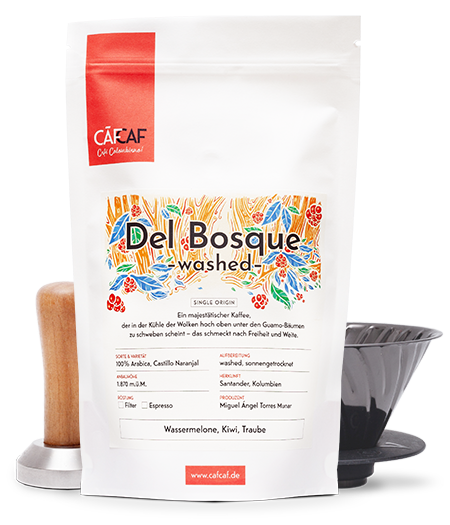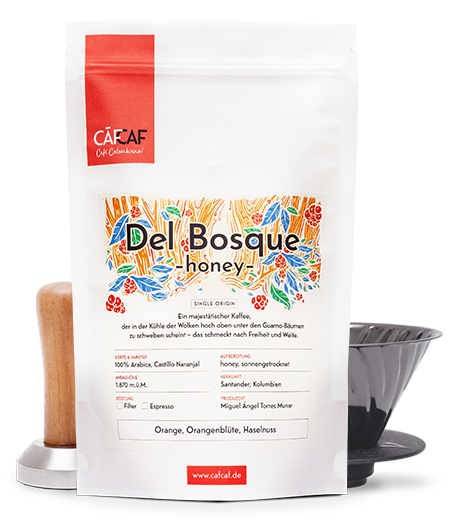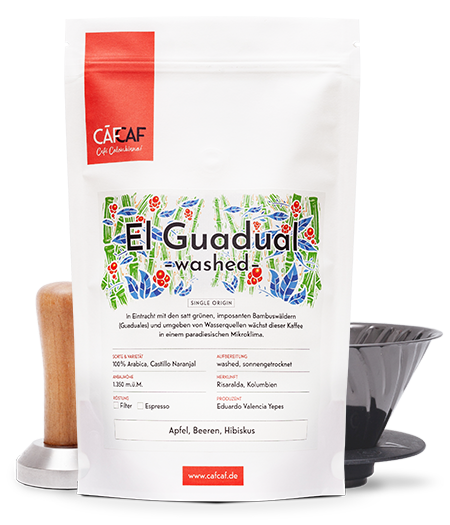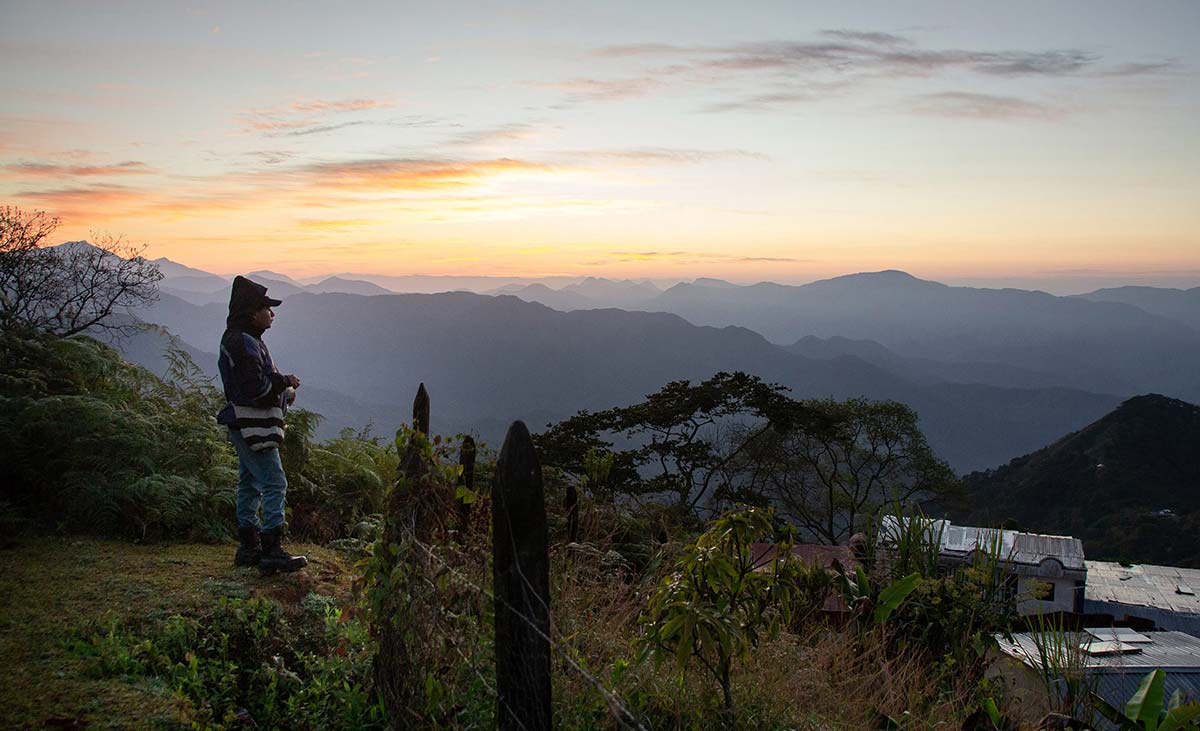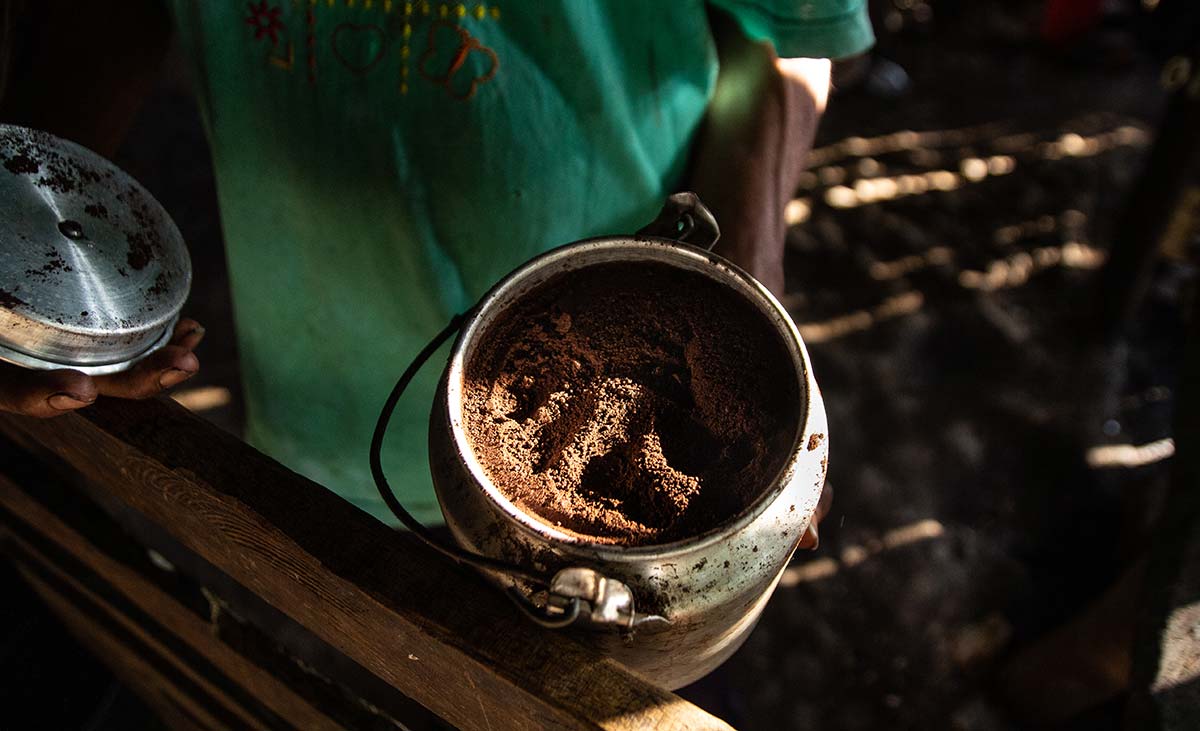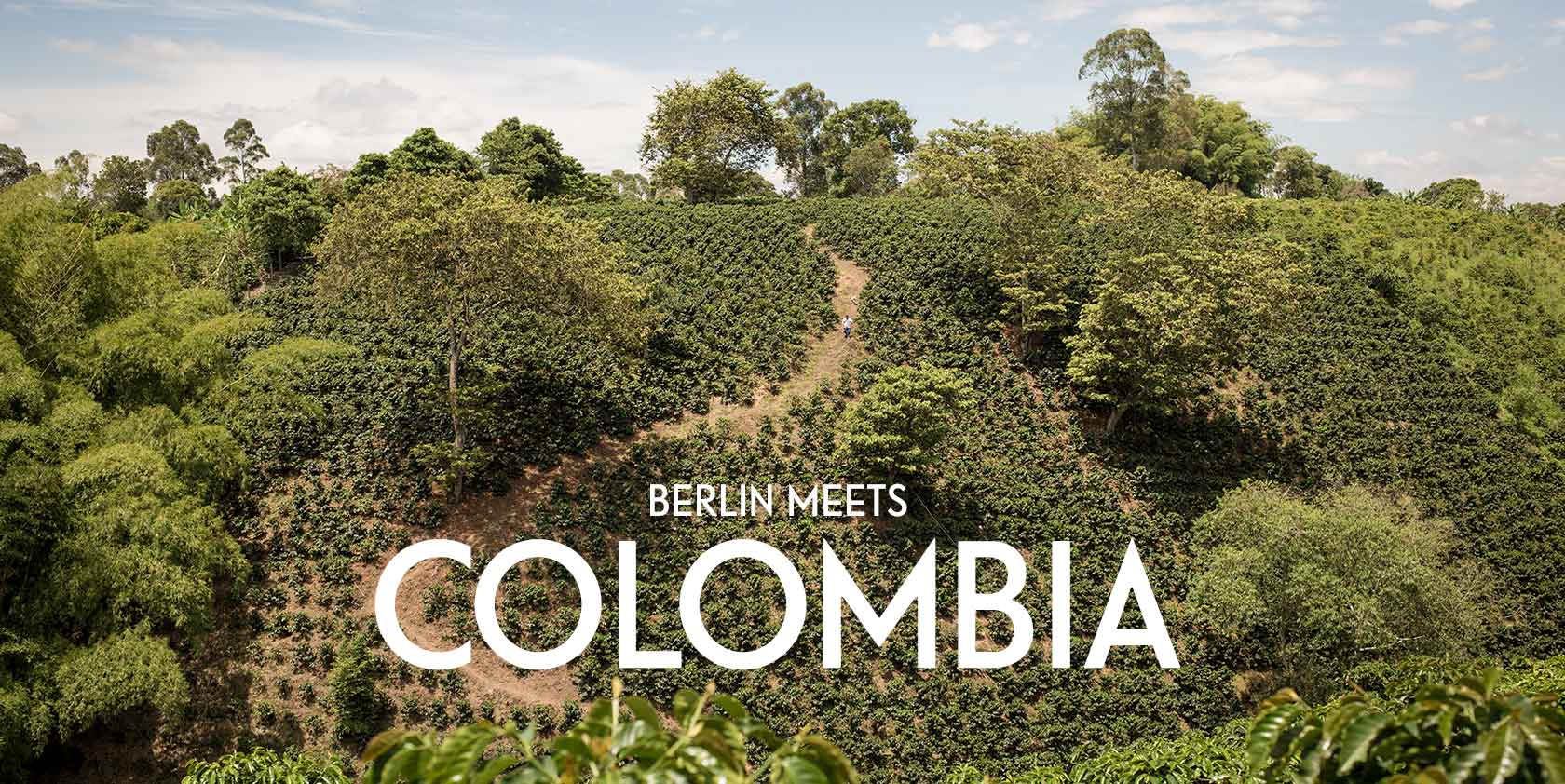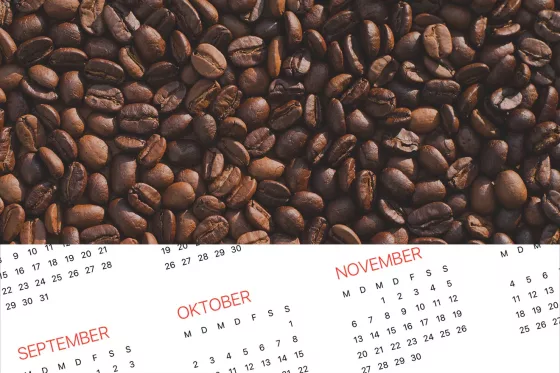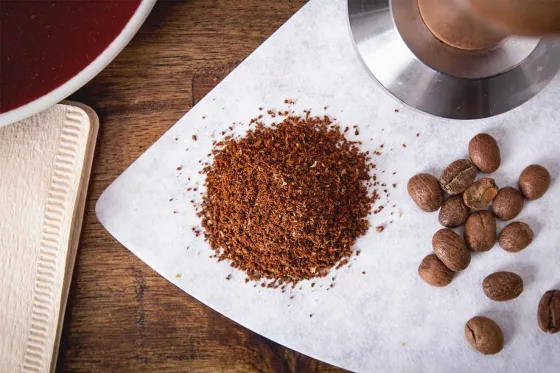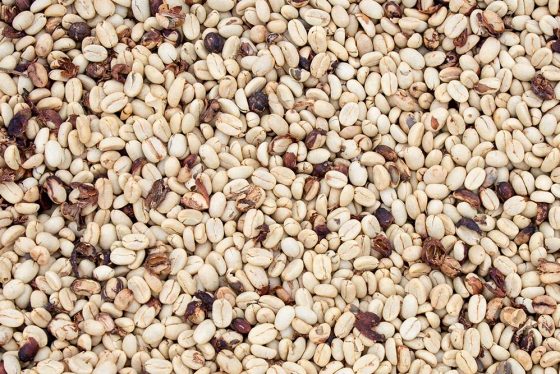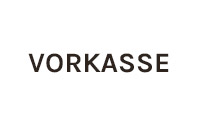World Coffee Research (WCR) is a non-profit, collaborative research and development program of the global coffee industry to grow, protect, and enhance supplies of quality coffee while improving the livelihood of the families who produce it. One of World Coffee Research’s key objectives is on improving coffee genetically by breeding new varieties. We talked with Greg Meenahan, Partnership Director of WCR, about the daily work of the organisation and about one of their recent research topics:
The F1 Hybrid.
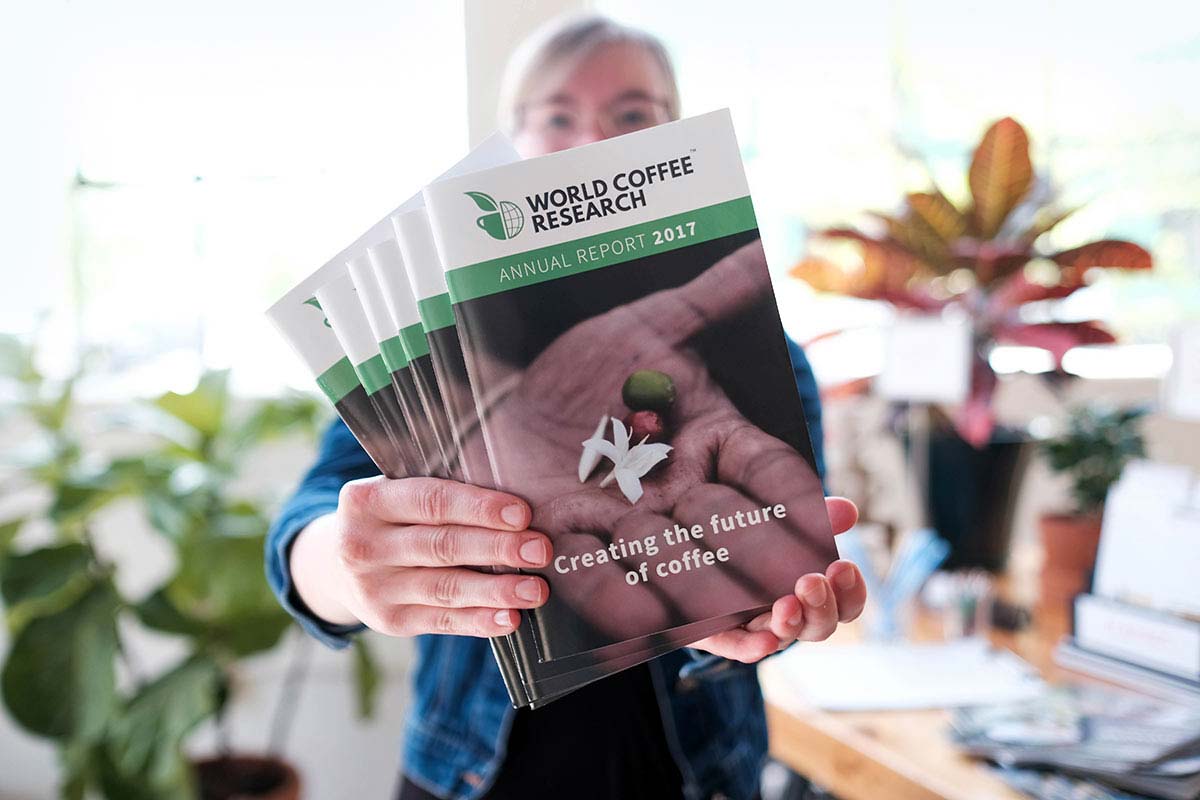
Annual Coffee Report by World Coffee Research
First, let’s talk about the daily work of the scientists at WCR: Is there a routine? How often do you work in the lab, how often are you in the fields?
Most of our scientific leadership team is in France, and their work looks rather unsexy from the outside: It’s a lot of sitting in front of computers, making sure trials stay on track, analyzing data, etc. The real action happens in our field trials, which are located in 24 countries currently. There, depending on the trial, we have our own agronomists working together with collaborating researchers from national coffee institutions, agronomists from exporting companies, and farmers themselves to get trees in the ground, take measurements, work through problems, etc. Our model is based on participatory research – we do very little by ourselves alone. One exception is that we have a test farm in El Salvado where we have a small germplasm collection (e.g., genetically diverse wild coffees used in breeding), make new F1 hybrid crosses, plant and test those crosses, and run agronomy trials on things like biochar, mycorrhiza, etc.. A good list of all our people can be found here. This is really the most professional and talented group of people I have ever had the opportunity to work with.
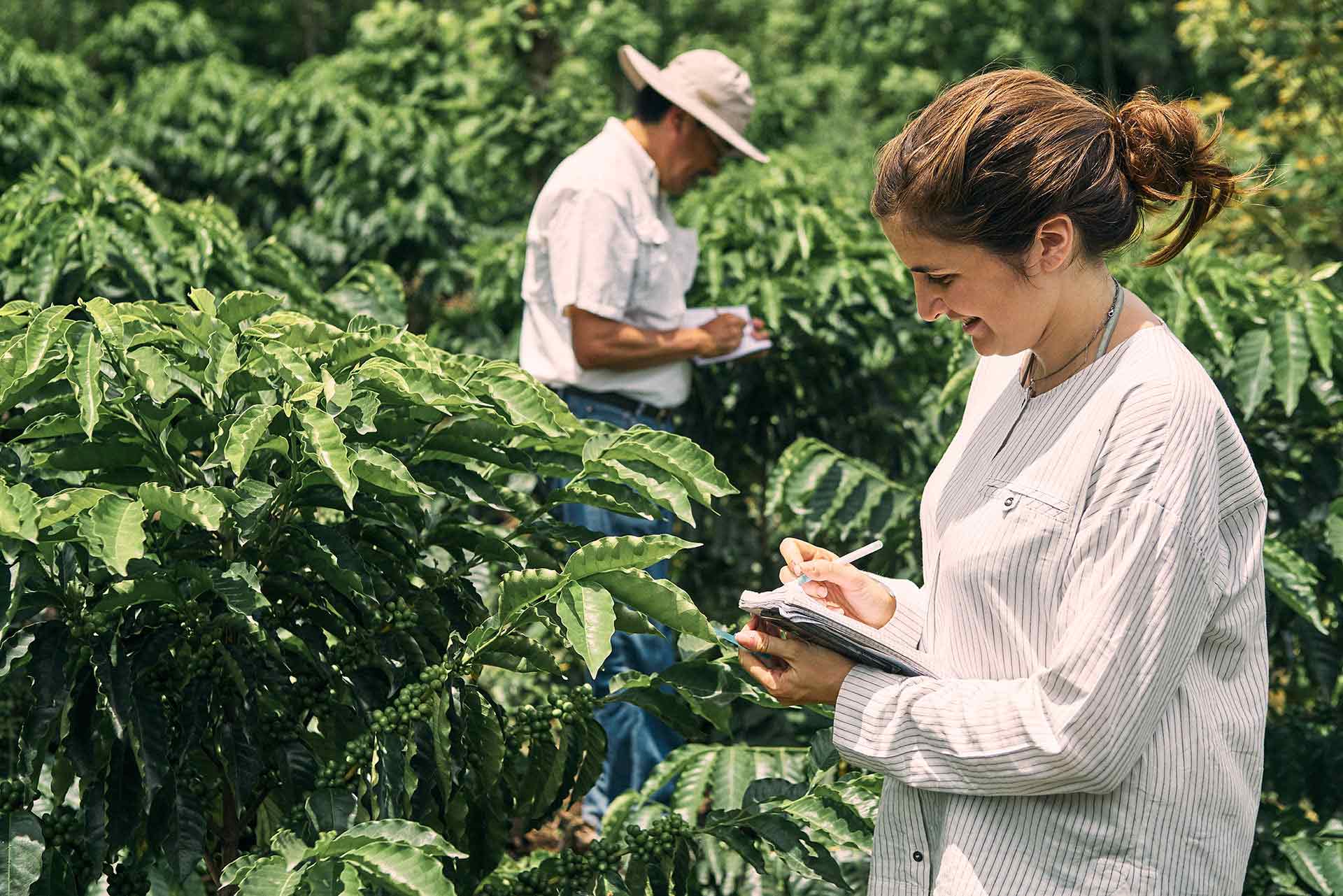
Lucile Tonuitti, WCR’s Molecular Breeder, observing coffee plants in the field. Photo: World Coffee Research
Who do you work for – farmers, federations or gorvernments? And what exactly is the process, how do you get to a new research topic?
We work for the coffee producers of the world, and, more specifically, for those producers who are struggling to make a profit with the coffee they grow. Because coffee supply chains reach into the most remote corners of the planet, coffee represents a significant potential for economic development, for poverty reduction. This is our motivation.
In order to achieve this objective, it’s necessary to work with all the entities you mention. The systemic issue that has kept coffee an orphan crop is related to who typically pays for agricultural R&D. Typically, it’s the producer paying for it, along with government support. But because coffee is grown in poor countries, there are many resource barriers preventing agricultural research and development on coffee.
Our reason for coming into being was to help the coffee industry make investments in badly needed coffee agricultural R&D, so industry itself could have skin in the game. We’ve been extremely pleased to see that this industry commitment has also galvanized the public and development sectors to increase their focus on coffee R&D. For example, a big new USDA coffee development project, called MOCCA, specified that some of the funding must be focused on research and development. When the project was awarded recently, they specifically called out WCR’s Global Coffee Monitoring program. This is vital but still unfortunately too rare. So USDA is really leading the world on this one. For the last 150 years, agronomic research and development has been a precondition for profitable farming. That isn’t a “theory of change.” It is a fact.
Regarding your question about how we decide what research to do, this is based on a strategic research plan that we have had vetted by experts and advocates from the entire coffee value chain. Urgency is the driving factor of this plan. The plan represents the fastest, cheapest way to deliver on the key constraints preventing the economic sustainability of producers.
The strategy can be summed up in the four major initiatives we have underway: Breeding new varieties, deeply researching existing varieties, participatory profitability research in farmer fields, and helping coffee establish a viable seed sector.
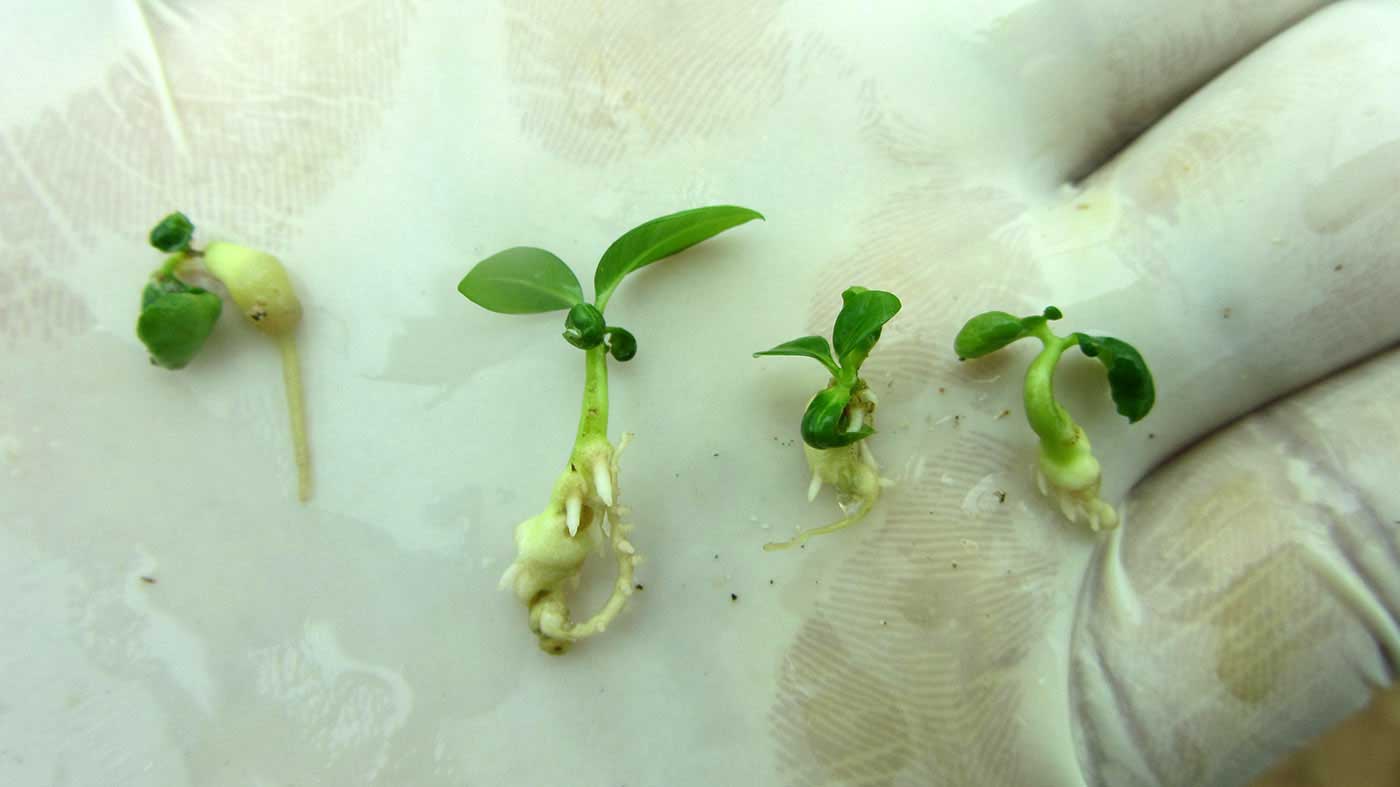
Baby coffee plants created from leaf tissue (called somatic embryogenesis). These plants are tiny clones – exact copies – of the mother plants. These plants are created and shipped to trial sites around the world to test how different varieties perform in different environments (WCR’s International Multilocation Variety Trial). The plants are cloned to ensure that the exact same genetics are being tested in all locations. Photo: World Coffee Research
First, breeding: We are laser focused on developing, and helping our country partners develop, new non-GMO varieties of coffee that grow faster, reap more, maintain or increase quality, and are resilient against disease, pests, drought, and frost. We do this using advanced genetics to help us identify and select the winners, and we share that knowledge with countries to aid their breeding efforts. Currently we are testing over 60+ new hybrids and we launched a new collaborative breeding hub in Rwanda that will serve all of East Africa.
Because that takes time, a minimum of ten years (WCR is in year 6), it’s necessary to get the most out of the varieties currently available.
Our International Multilocation Variety Trials test 35 of the most commonly used varieties around the world on scientific test plots of 28 different international coffee institutes. The objective: Discover what grows well where. Never before have all these varieties been tested around the world. The coffee institutes will see the world’s coffee collection growing alongside their own country’s approved varieties. If there are varieties that do really well and the country is interested, we’ll help the country release it for their producers.
The Global Coffee Monitoring Program, when it is fully installed, will be a network of over 1100 on-farm trials testing two improved varieties and two improved agronomic practices against the producer’s existing variety and agronomic treatment. This will crack the profitability code for producers and will end the ubiquity of “one size fits all” kind of recommendations. To maximize a producer’s profits in some cases, it may be necessary to grow several varieties, different varieties for high altitude vs low, for shade vs full sun…
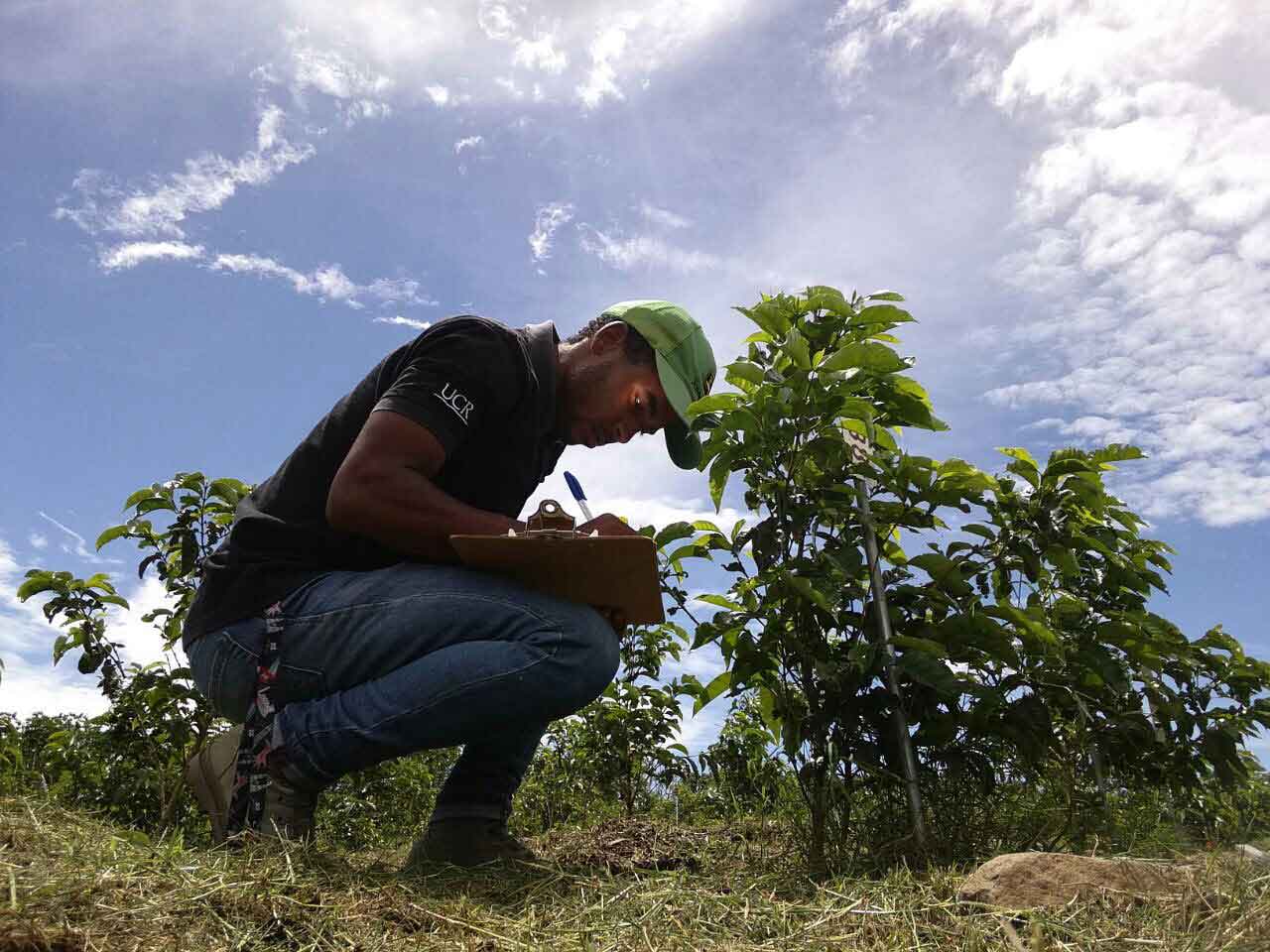
Taking measurements of a baby F1 hybrid created by WCR at the Finca Alsacia farm in Costa Rica. Photo: World Coffee Research
And finally, there is a huge problem with the coffee seed sector. Namely: There isn’t one. Most farmers are producing their own plantlets from seeds collected in their fields or from neighbors. On the surface, this sounds good: self-sufficient farmers making their own plants. But more often than not, it’s a key constraint to profitability. First of all, the skills required to run a good nursery are not the same skills needed to farm coffee. Worse, what we are seeing is that many farmers don’t know or are mistaken about what variety they are growing. This matters because different varieties do different things. And if farmers don’t know or can’t trust what they have, at best they can’t farm as effectively. At worst, they are exposed to huge risk: Like planting something they think is resistant to a major disease like coffee leaf rust that turns out to be susceptible. Suddenly, they are having to spray fungicides at significant cost, or risk losing 20% of their crop in a bad year. Given this situation, WCR is making a major effort to support nurseries through trainings, has created tools like the Arabica Coffee Catalog, runs a DNA testing service to help farmers identify what they have, and has created the first nursery certification program for producing healthy, genetically pure plants. Nursery development is an exciting new economic development opportunity. This is huge.
We have other research happening regarding coffee leaf rust, shade, and other topics, as you might imagine, but what I outline above represents the basics, the minimum needed to move the needle.
»Most farmers are producing their own plantlets from seeds collected in their fields or from neighbors. On the surface, this sounds good: self-sufficient farmers making their own plants. But more often than not, it’s a key constraint to profitability.«
–Greg Meenahan, World Coffee Research
How many scientific topics have you recently been working/researching on at the WCR and how big is your team of scientists?
I think I answered this one above. On staff, we have 18 researchers and agronomists. But we work with a network of collaborating researchers and agronomists that numbers in the hundreds to execute our trials. Sometimes we hire the most knowledgeable researcher in a certain field to help us with a project, and sometimes we are just working side by side together with country breeders or agronomists from partner companies.
We want to introduce…
Coffee tells stories. All around the world. Some of them put a smile on your face. Some are thought-provoking. Some are inspiring. From some stories you can learn a bunch of things you didn’t know before. Other stories in turn give you a new perspective on things. And some stories connect.
No matter what your story is about – if it’s about coffee, or something connected to it – we’d like to share it with our readers. Because every single CafCaf STORY is different and this reflects how diverse we coffee lovers are. All around the world.
What is your story?
Now let‘s talk about the F1 Hybrid. What is it, and what is the difference between an “F1 Hybrid“ like, Centroamericano, and a “pure line variety“ like, Bourbon?
F1 Hybrids are the coffee of the future. I have little doubt that most of the new coffee that will be planted in the future will be F1 Hybrids. The “F” in F1 stands for “filial.” Filial is just another way of saying, “of or due from a son or daughter.” The “1” in F1 means that it’s the first son or daughter from a parent. When two genetically distant parents mate, heterosis occurs. Heterosis is another way of saying “vigor.” Heterosis is a phenomenon that happens in both plants and animals when genetically distant varieties of the same species mate.
This “vigor” is what makes F1s special. But the word “vigor” really undersells what this is. Some of the F1 varieties that are out there now produce cherry in two years, rather than in 3 or 4, yield 50% more than what a traditional variety yield, are more tolerant of key diseases and frost, AND have scored over 90 points in Cup of Excellence competitions. This is remarkable. It fundamentally changes the conversation about how to achieve economic sustainability, and empowers the producers like never before. No varieties in the past have been able to combine all these traits that matter to both farmers and consumers. These are truly improved varieties and are the key to profitable farming in the future. There are a small handful of F1 varieties available to farmers already, most developed by Dr. Benoit Bertrand before he was WCR’s chief breeder. We have 60+ new crosses in the field for testing right now, and many more will be made in the coming years by both us and our partner countries.
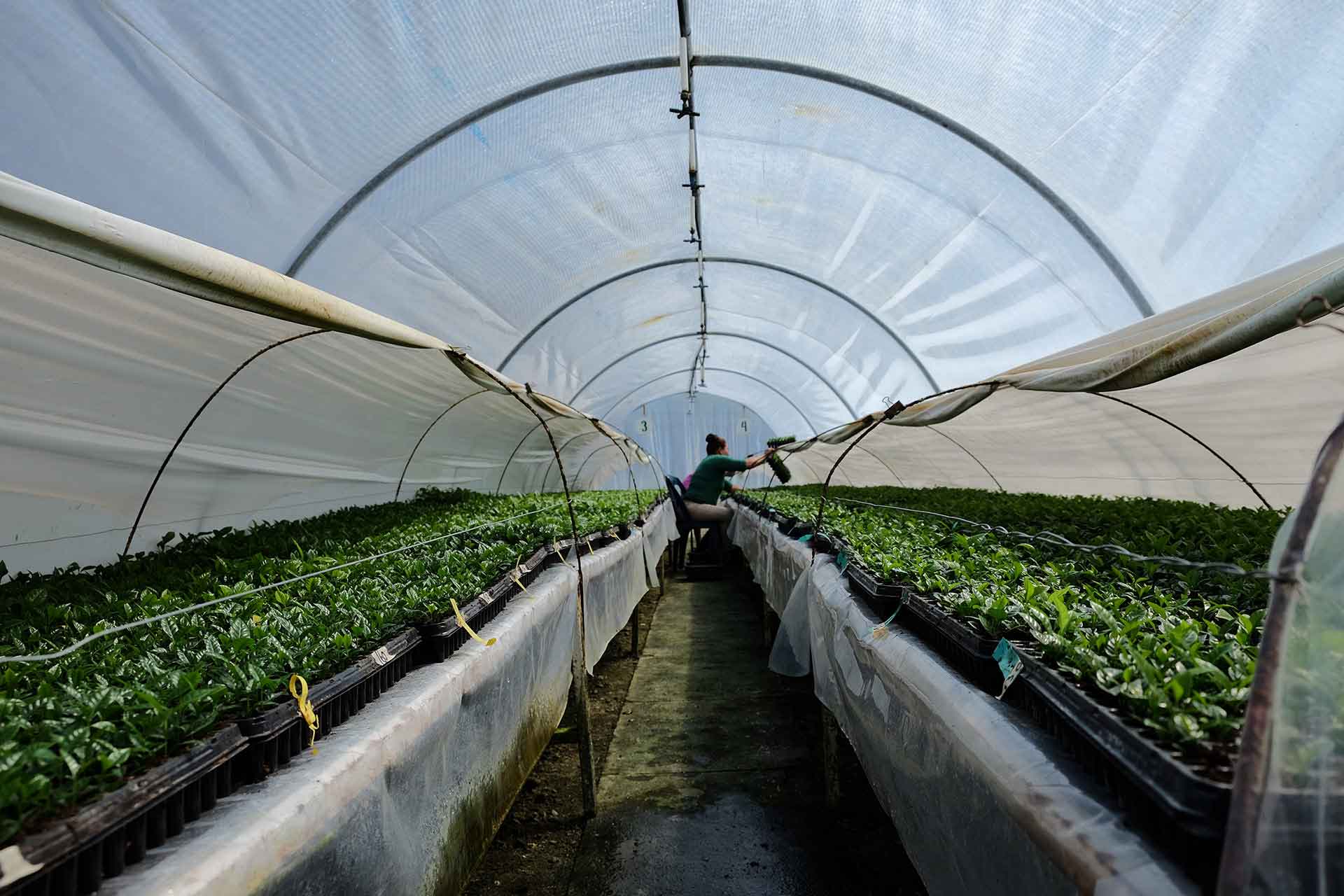
Coffee nursery. Photo: World Coffee Research
The reason F1s have this vigor is because they have all the genetics of those two diverse parents. With all those genetic tools, the plant can adapt to a much wider range of environmental conditions. Pure line varieties have given up genetics during the successive inbreeding, which is necessary to stabilize the variety.
A “pure line variety,” like Bourbon, therefor, is adapted to a much narrower range of conditions. This is one of the reason producers are struggling to make a profit. Almost 80% of all coffee grown in the world is a close relative to Bourbon and Typica and they are being grown in environments that are not ideally suited for them.
What is so great about an F1? Are there drawbacks?
The main drawback of an F1 is that they are more expensive and harder to mass produce—typically they need to be purchased from experienced nurseries.
The breeder makes a cross of two genetically distant parents to produce a baby – the F1 hybrid. This seed contains the sum of both parent’s genetics. If a farmer tries to save the seed of an F1 hybrid growing in his field (the seed is the F2) to plant more babies, a phenomenon called, “segregation” happens. All the various combinations of the dominant and recessive traits from the two parent plants are expressed in the F2 generation. The farmer will get a bunch of plants that are all over the place – some taller, some shorter, some wimpy, some strong. But guaranteed, very few or none will look and behave like the really amazing F1s she has growing in her field. The only way to ensure that you have the great performance, the vigor, is to have the F1 itself, and the main way to mass produce them right now is cloning (e.g., making exact copies).
The most efficient way to make clones is to propagate them in a lab using somatic embryogenesis. Somatic embryogenesis is a common plant propagation technique used in agriculture. (Let me repeat, it’s not GMO.) It’s cloning an exact copy of the plant by cutting up leaves, turning those leaf cells into embryonic coffee plant cells, and then growing embryos into individual plants with the help of growth hormones. Today this costs about $0.20 per plant (although five years ago it cost $1!). When compared to a seed that might cost $0.005/each to make, you can see embryogenesis represents a significant barrier, both in terms of cost and availability. But even at $0.20 each, for producers that can afford it, the investment is completely worth it. The performance gains for 20+ years, the lower risk of disease is a game changer.
»If a farmer tries to save the seed of an F1 hybrid growing in his field to plant more babies, (…) the farmer will get a bunch of plants that are all over the place – some taller, some shorter, some wimpy, some strong. But guaranteed, very few or none will look and behave like the really amazing F1s she has growing in her field.«
–Greg Meenahan, World Coffee Research
Another way to produce F1s is to manually cross the parents cross over and over and over, mixing pollen from the same individual father and mother to make new baby plants. To do this technicians remove unopened flowers from the father tree and collect the pollen from them. Then they go to the mother tree, remove the stamens and native pollen, and paint on the father pollen to the pistil (a flower’s overy). Voila! They just helped the plant have sex! Then they put a paper bag over the branch to prevent random pollen from getting in. Eventually, that mother flower will produce an F1 seed. As you can imagine, this approach is insanely and prohibitively expensive and slow. It’s not a viable method for large scale reproduction of F1 seed.
But recently we have seen one of the most exciting breakthroughs in coffee breeding ever, which has lead to the ability to mass propagate F1 hybrids by seed and bring their cost way down, meaning these amazing plants will be much more widely available to producers.
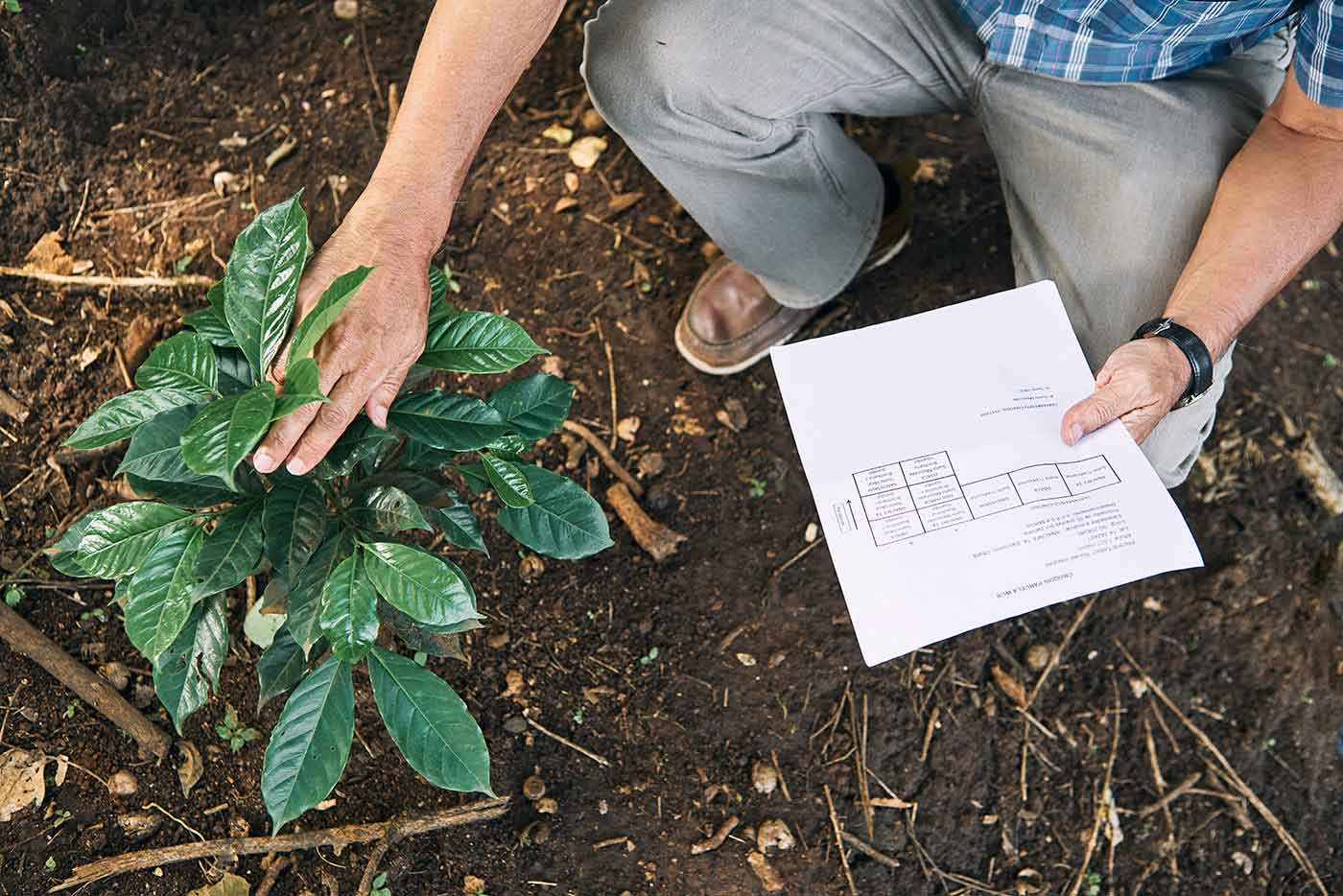
Photo: World Coffee Research
The breakthrough starts with the discovery of a random coffee plant in a research field that is sterile – it produces no pollen (and therefore no cherries). Remember that the manual way to make F1 seed is to take pollen from a father and give it to a mother plant by hand. But if one of the parents is sterile, you can set up a seed garden with alternating rows of mother and father plants and let wind and pollinators do the work for you.
When one of the parents has no pollen of its own, any cherries that appear on the male sterile trees necessarily contain F1 hybrid seed.
This changes everything. The first commercial available F1 that was distributed by seed was a variety called Starmaya. This was developed by Dr. Bertrand during a private/public breeding program between CIRAD and an exporter called ECOM.
World Coffee Research, just this past year, identified the location in the coffee genome that controls male sterility and molecular markers that help us identify when a plant has this trait. Starting this year, we will be using that knowledge to rapidly screen plants to see if they are male sterile, which will speed up our ability to make new F1 crosses that can be propagated by seed. We are very excited about this.
Are the improved coffee varieties WCR is developing genetically modified (GMO)?
Nothing WCR is developing is GMO. It’s just good old fashion plant sex. But we use advanced genetics to determine what parents to breed and what offspring to select from that breeding.
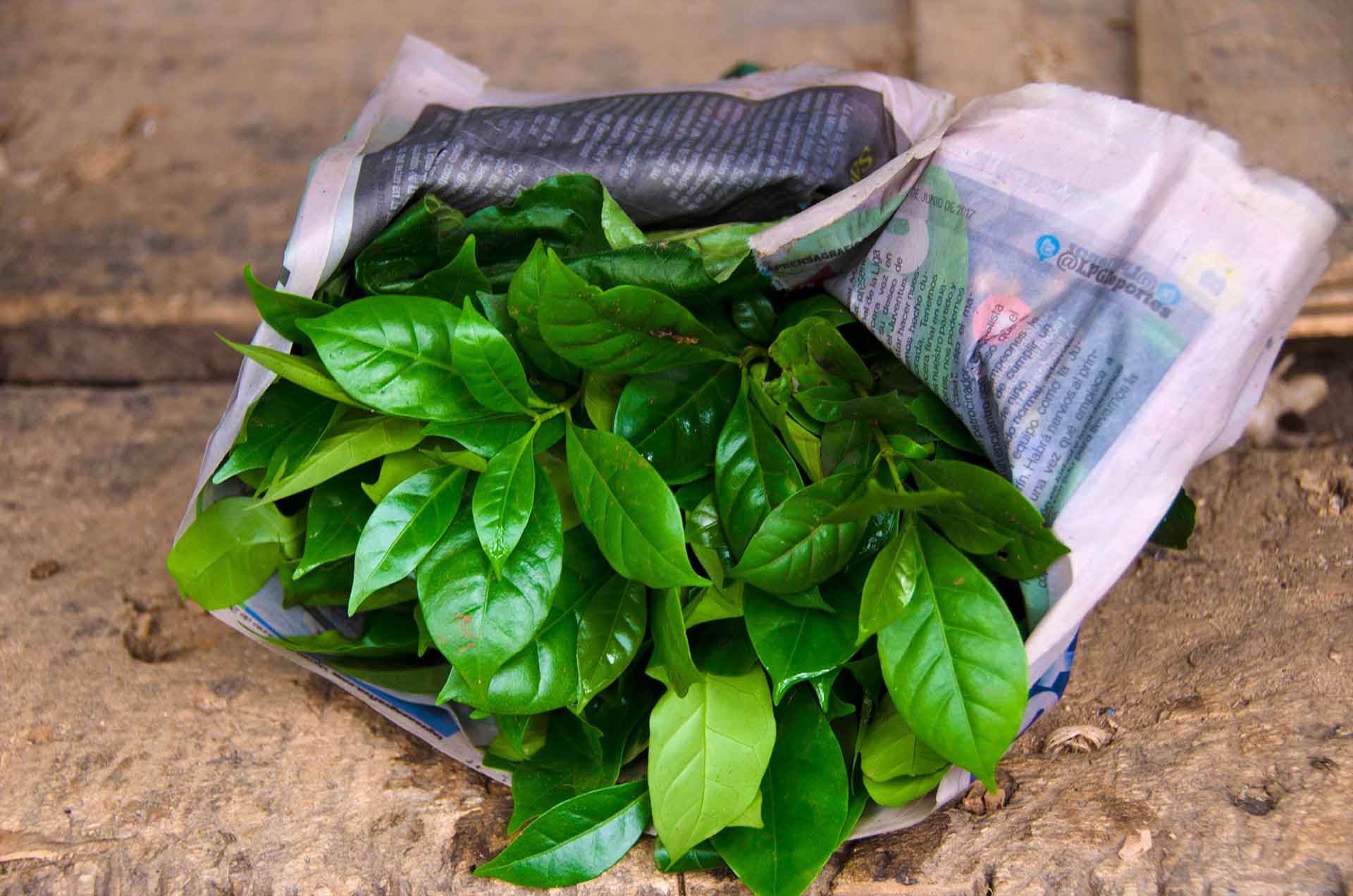
Photo: World Coffee Research
What is molecular assisted breeding (MAB)?
In the old days, like ten years ago, before it was cheap and easy to read DNA, breeders made decisions about which plants to select or cross based purely on how the plant looked and behaved – called its phenotype. But coffee trees take three years to mature and produce cherry, so the process of finding out if a given trait was coming through to the next generation was painstakingly slow. Historically it’s taken 20-30 years for a new variety to go from the first selection/crosses to being able to be released for farmers. That’s way too long if the goal of breeding is to help farmers address the pressing problems they are facing today. Imagine buying a brand-new computer and the only software available to run on it was developed 30 years ago. That’s effectively the case with coffee farmers and the technologies they are working with.
Molecular breeding has the power to dramatically shorten the time it takes to develop new varieties because it lets you peer inside the plants you’re working with to see if they have any genetic markers associated with the traits you’re interested in. So you can take the sample of a little baby leaf in the nursery and look to see if it’s male sterile without having to wait 2 years to find out if the flowers are producing pollen or not. This can cut in half the time it takes to select which plants to use for making crosses and which to advance to the next generation. We are looking for molecular markers associated with all sorts of traits of interest, including cup quality. We are just at the beginning.
The other major use of molecular breeding is in the help it offers for creating new F1 hybrids. You might remember that hybrid vigor is maximized when the two parents are genetically further apart. Now, by reading a coffee plant’s actual DNA, we can find and quantify that genetic distance between two potential parents precisely and use that information to make crosses that are likely to result in the most vigor.
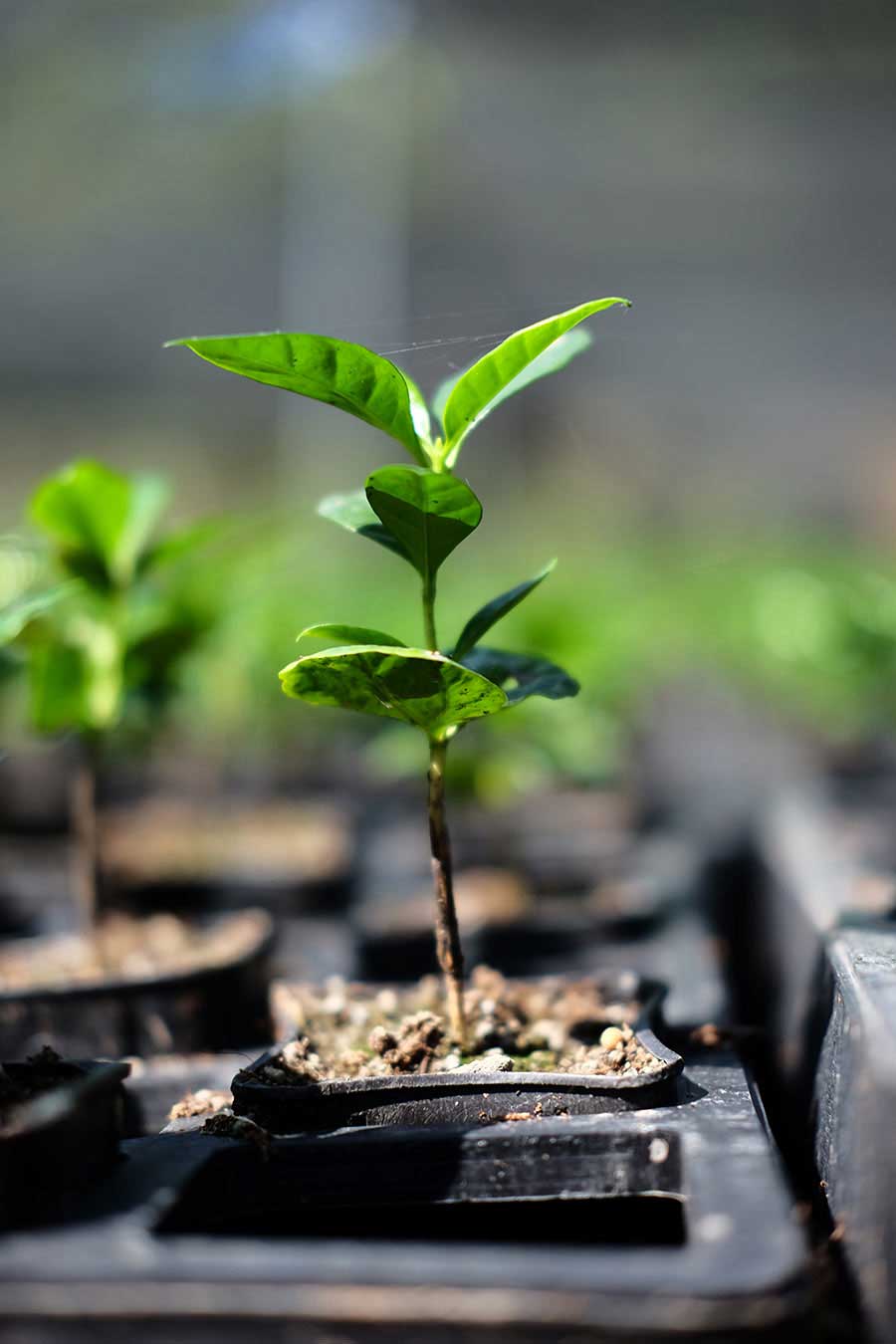
Photo: World Coffee Research
Just a speculative prediction: Will we ever get back to the original, pure line varieties?
I think my favorite variety right now is Bourbon. There’s nothing like a good, chocolatey Bourbon for me. Most of the industry has fallen in love with Gesha. That’s a pure line traditional variety that isn’t going away. There is no doubt these traditional varieties will continue to be very important for the industry. There is no one single variety that will solve all of coffee’s problems. There is and should always be the possibility for farmers to choose the variety that is best for them and helps them meet their challenges and aspirations. A huge part of our work is trying to make that kind of choice-making a reality for farmers. Right now, it’s not.
Many in the industry are waiting for the new variety. But that’s not how it’s going to work. When the big data from WCR’s Global Monitoring Program goes online, to maximize profits from their land farmers will be planting different varieties in the different micro climates found on their farm. It’s very common, say, for a producer to have an area above 1600 meters that is their sweet spot for the high-end specialty they grown. But they might also have an area lower on the mountain that never hits the yield or quality. Maximizing the value of the land means growing the variety best adapted to the conditions found.
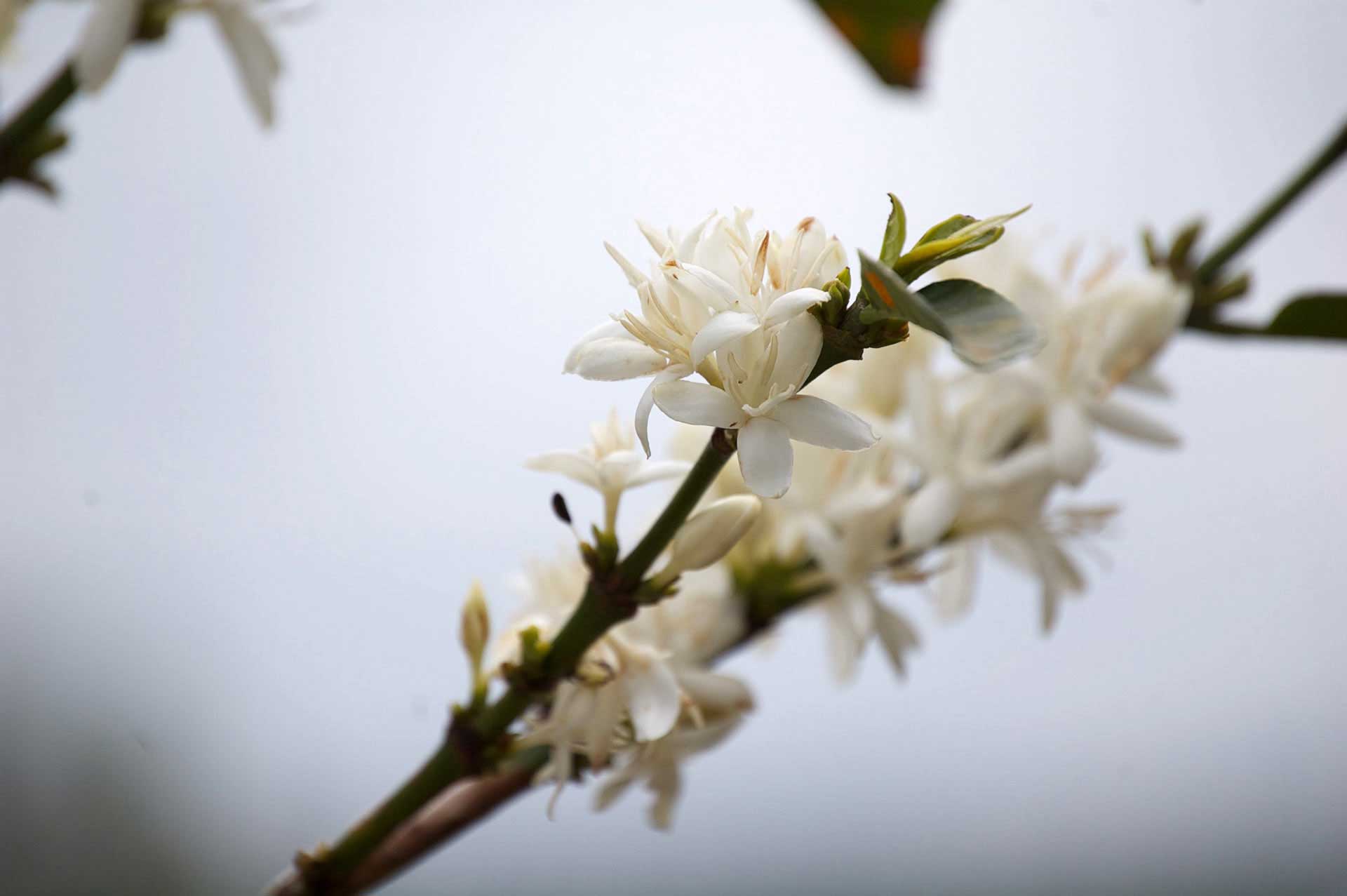
Photo: World Coffee Research
But things will change in two important ways. First, the industry will actually get the pure line traditional varieties they think they are getting, because there will be some kind of verification that has confirmed the genetics. Second, the tradeoffs between improved varieties and the best traditional varieties, namely the cup quality and flavor profiles, will lessen, I think. Our team is confident that eventually the varieties we develop will be, if not better, just as good, but different as my favorite, Bourbon.
In addition, the introduction of coffee varieties with significantly broader and different genetics may actually end up having a protective effect on the traditional varieties. When there is narrow genetics among a massive population, that entire population is at risk. We see saw this with the massive epidemic of la Roya in Central America in 2012. It’s actually a quite common phenomenon in agriculture.
Ultimately, what WCR is doing is empowering producers with the tools and information they need to compete. When you understand that producers don’t have variety choices, you begin to understand how difficult it is for them to be profitable. Imagine if all the backyard vegetable gardeners out there were only given one kind of tomato to grow. Outrageous!
At the end of our articles, we usually say goodbye to superficial knowledge (in other words: fake news) about coffee. Is there anything you would like to get off your chest here?
Adieu, Halbwissen
My „Adieu, Halbwissen“ is a false “fact” I hear and read repeated all the time: “Coffee is the second most traded commodity, after oil, in the world.” Hey, coffee is super important to the world, but coffee isn’t even in the top ten, regardless if you measure by weight, volume, or value. I think this “fact” might have been true in the 1960s or 70s.
Adieu, Halbwissen
My „Adieu, Halbwissen“ is a false “fact” I hear and read repeated all the time: “Coffee is the second most traded commodity, after oil, in the world.” Hey, coffee is super important to the world, but coffee isn’t even in the top ten, regardless if you measure by weight, volume, or value. I think this “fact” might have been true in the 1960s or 70s.
Weitere CafCaf Stories:
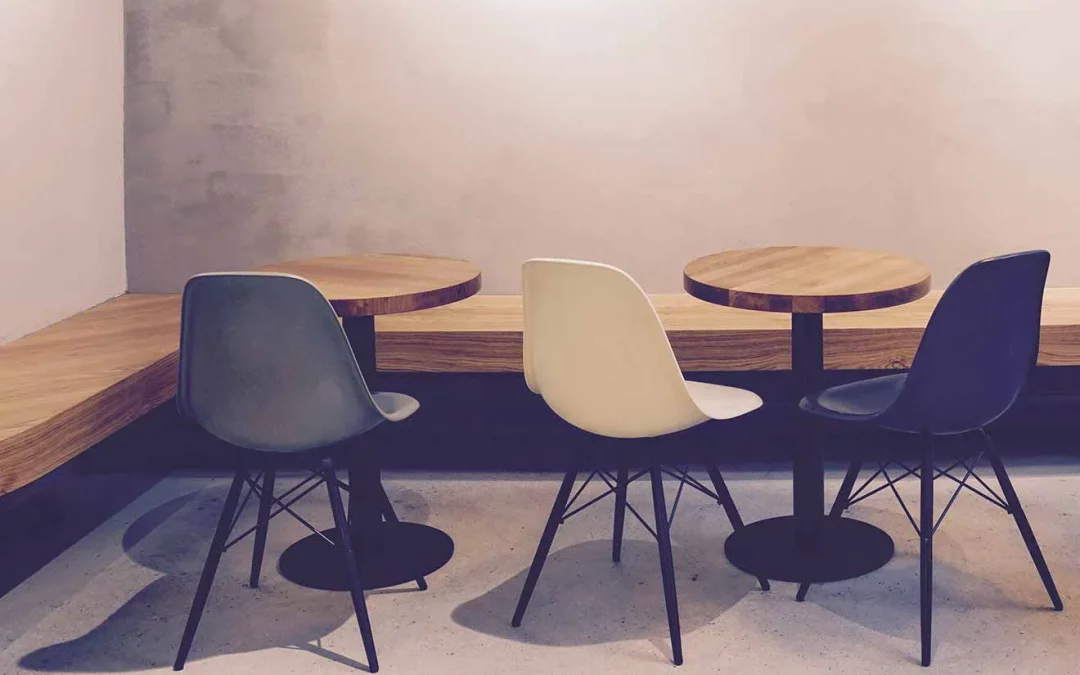
Building a coffee shop (EN)
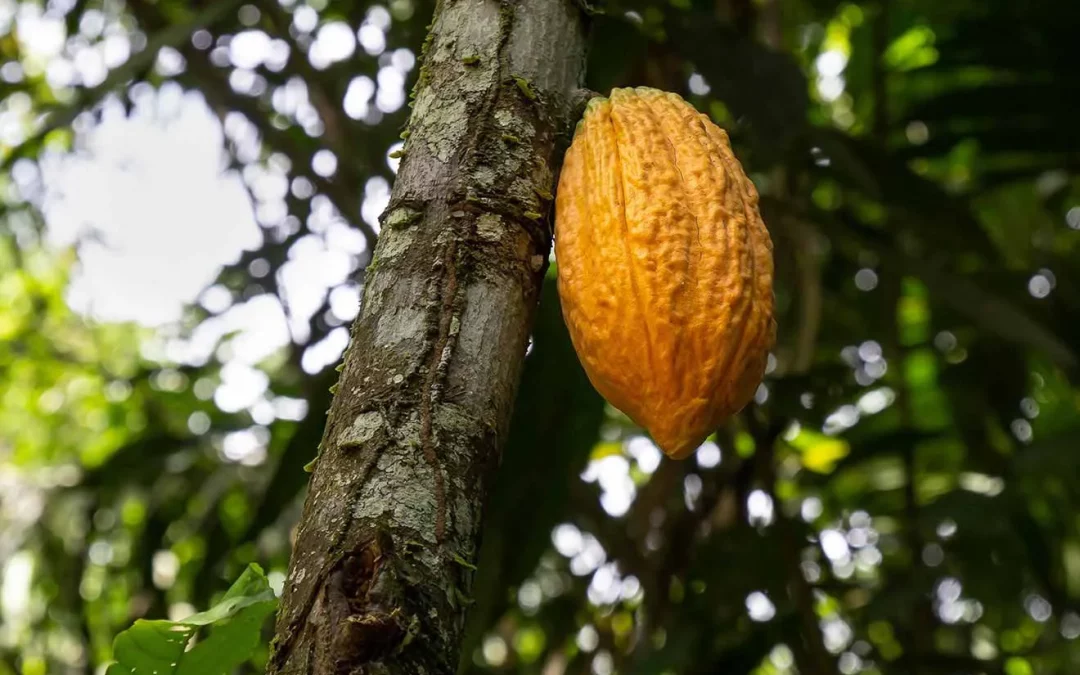
Cacao talks (EN)
Read the interview!

